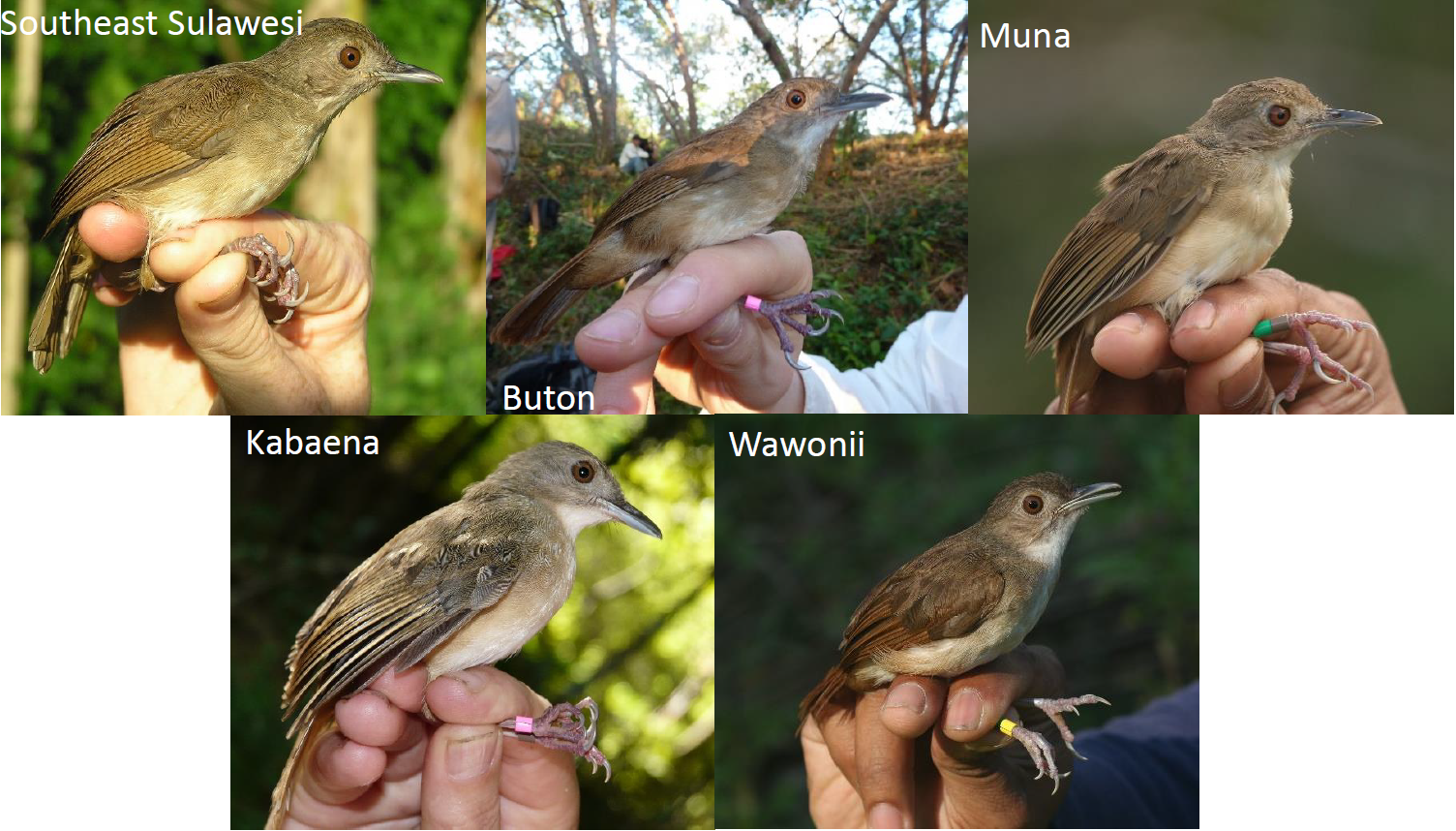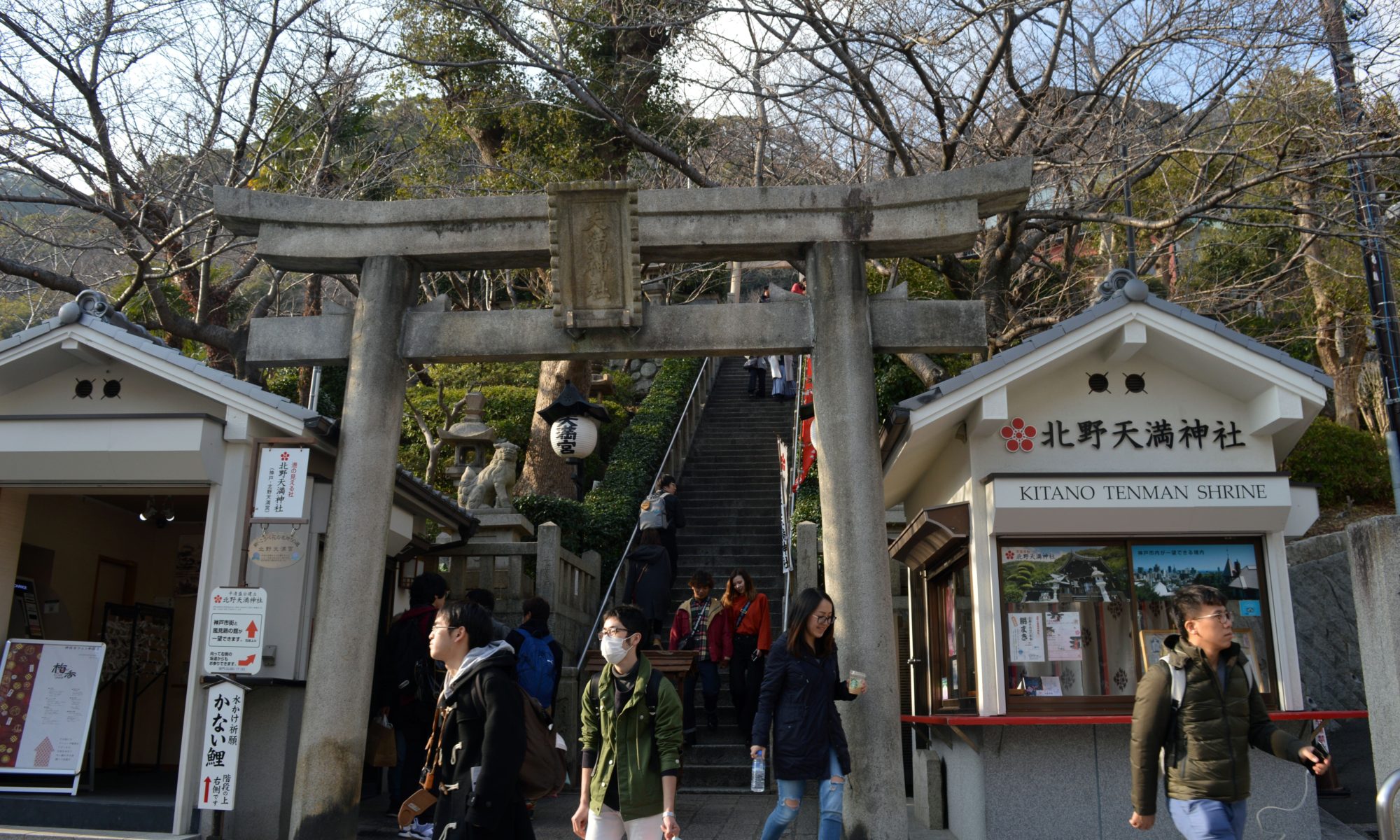What is the first image that comes to mind when you think of evolution? Possibly a line of cartoon primates marching, slouching monkeys at one end and naked men with spears at the other. Or a branching tree diagram where each twig represents an organism, maybe with a tentative “I think” scribbled above it. Alternatively, you may have pictured an illustration of related birds from isolated islands, each showing a dramatically different bill shape adapted to a different diet. Darwin’s Galápagos finches represent a foundational influence in terms of where we tend to look for signs of evolution and what we expect these signs to look like. Our new paper, just published Open Access in Zoologischer Anzeiger: A Journal of Comparative Zoology, provides a contrasting image. We looked at the Sulawesi babbler (Pellorneum celebense), a dull brown bird that spends its time hiding in bushes on less isolated islands in Indonesia, looking pretty similar from one island to the next. Nevertheless, we found that several of its populations are quite different from one another in mitochondrial DNA, in morphology, and in song.
Continue reading “Evolution in the understorey”Separating signal from noise in acoustic biodiversity surveys
We can now use acoustic recording equipment to monitor all the sounds produced in an ecosystem. By recording and listening back to sound in this way, we hope to capture useful information about nature. One way to do this is using ‘acoustic indices’, mathematical summaries of the acoustic information contained in audio recordings. But how reliably do such indices actually reflect the biodiversity many of us are trying to monitor and understand?
Continue reading “Separating signal from noise in acoustic biodiversity surveys”ESJ 66: Best in Show
This was my first time in Kobe, famous for its beef and cheesecake. Much of the city was rebuilt in the wake of a devastating earthquake that claimed the lives of more than six thousand people in 1995. The city mascot is Kobear (コーベア), a pun almost as clever as the bear is cute. The conference centre was a vertical maze of meeting rooms and halls, with signs in Japanese and an army of concierges attempting to funnel us towards our venue of choice.
I had met Dr. Maria Dornelas at the entrance hall on day one and introduced her to Yuka Suzuki. I’ve known Yuka for a couple of years at this point, but we had never worked on anything together until this conference. Yuka and I had been chosen to organise a symposium at the Ecological Society of Japan’s 2019 annual meeting (ESJ 66), an honour not often given to such early career researchers. The ESJ meetings do not have plenary speakers, meaning that the few invited speakers that headline organised symposia act as the big draw. So, the pressure was on for us to deliver a symposium that people would find interesting and inspiring.
Read the full post on Sam’s blog, The Infrequent Musings of an Early-Career Ecologist!
Or read his award-winning paper here:
Ross SRP-J, Friedman NR, Dudley KL, Yoshimura M, Yoshida T, Economo EP. (2018). Listening to ecosystems: data rich acoustic monitoring through landscape-scale sensor networks. Ecological Research 33(1), 135-147. DOI: 10.1007/s11284-017-1509-5



